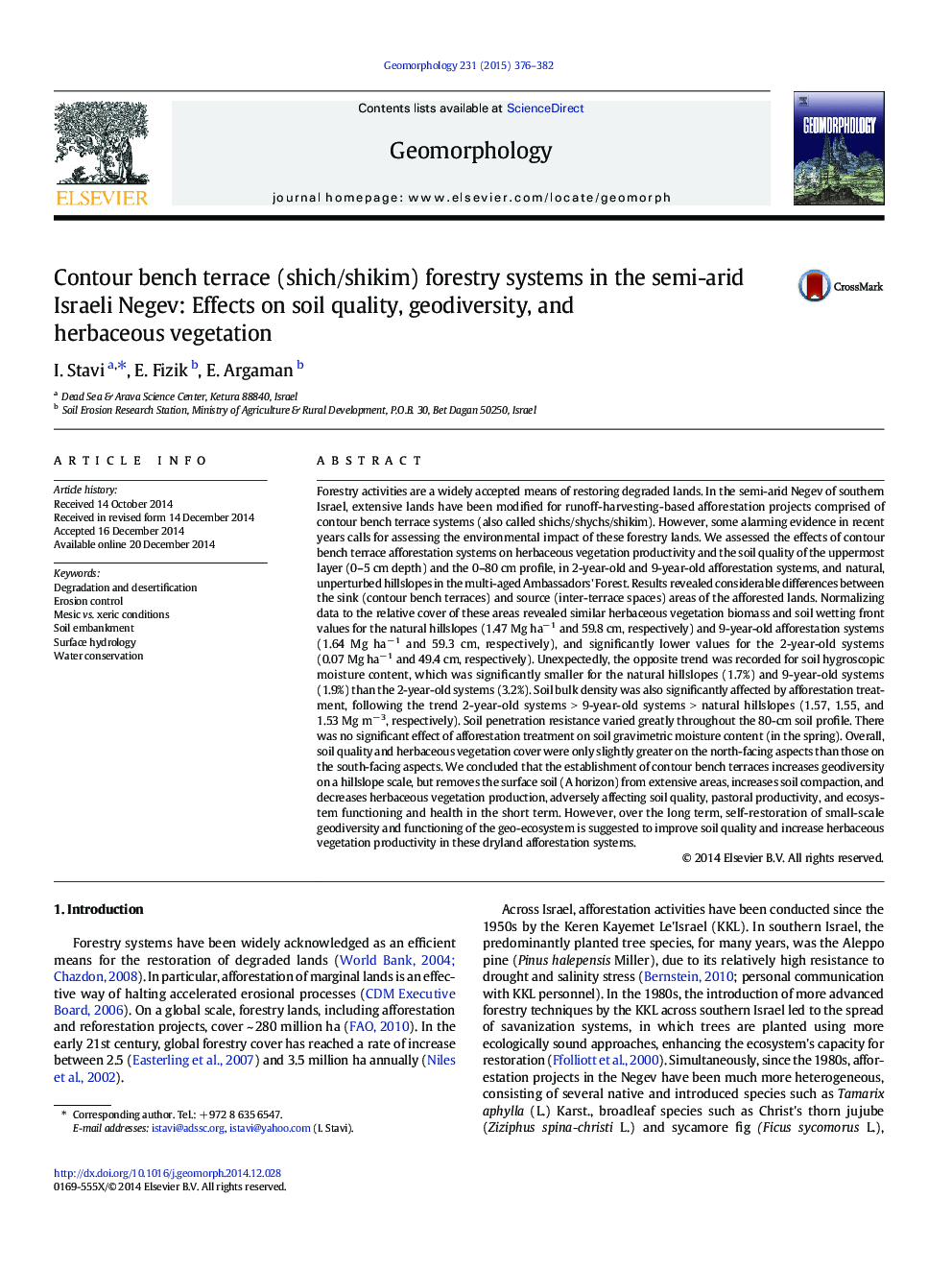| کد مقاله | کد نشریه | سال انتشار | مقاله انگلیسی | نسخه تمام متن |
|---|---|---|---|---|
| 4684345 | 1635418 | 2015 | 7 صفحه PDF | دانلود رایگان |

• In the short-term, afforestation earthworks lead to degradation of soil quality.
• Earthworks have also led to decreased cover of herbaceous vegetation.
• In the long-term, self-restoration of the geo-ecosystem has improved soil quality.
• Slightly greater restoration capacity was recorded in north than in south aspects.
• Geodiversity plays a central role in geo-ecosystem functioning and restoration.
Forestry activities are a widely accepted means of restoring degraded lands. In the semi-arid Negev of southern Israel, extensive lands have been modified for runoff-harvesting-based afforestation projects comprised of contour bench terrace systems (also called shichs/shychs/shikim). However, some alarming evidence in recent years calls for assessing the environmental impact of these forestry lands. We assessed the effects of contour bench terrace afforestation systems on herbaceous vegetation productivity and the soil quality of the uppermost layer (0–5 cm depth) and the 0–80 cm profile, in 2-year-old and 9-year-old afforestation systems, and natural, unperturbed hillslopes in the multi-aged Ambassadors' Forest. Results revealed considerable differences between the sink (contour bench terraces) and source (inter-terrace spaces) areas of the afforested lands. Normalizing data to the relative cover of these areas revealed similar herbaceous vegetation biomass and soil wetting front values for the natural hillslopes (1.47 Mg ha− 1 and 59.8 cm, respectively) and 9-year-old afforestation systems (1.64 Mg ha− 1 and 59.3 cm, respectively), and significantly lower values for the 2-year-old systems (0.07 Mg ha− 1 and 49.4 cm, respectively). Unexpectedly, the opposite trend was recorded for soil hygroscopic moisture content, which was significantly smaller for the natural hillslopes (1.7%) and 9-year-old systems (1.9%) than the 2-year-old systems (3.2%). Soil bulk density was also significantly affected by afforestation treatment, following the trend 2-year-old systems > 9-year-old systems > natural hillslopes (1.57, 1.55, and 1.53 Mg m− 3, respectively). Soil penetration resistance varied greatly throughout the 80-cm soil profile. There was no significant effect of afforestation treatment on soil gravimetric moisture content (in the spring). Overall, soil quality and herbaceous vegetation cover were only slightly greater on the north-facing aspects than those on the south-facing aspects. We concluded that the establishment of contour bench terraces increases geodiversity on a hillslope scale, but removes the surface soil (A horizon) from extensive areas, increases soil compaction, and decreases herbaceous vegetation production, adversely affecting soil quality, pastoral productivity, and ecosystem functioning and health in the short term. However, over the long term, self-restoration of small-scale geodiversity and functioning of the geo-ecosystem is suggested to improve soil quality and increase herbaceous vegetation productivity in these dryland afforestation systems.
Journal: Geomorphology - Volume 231, 15 February 2015, Pages 376–382